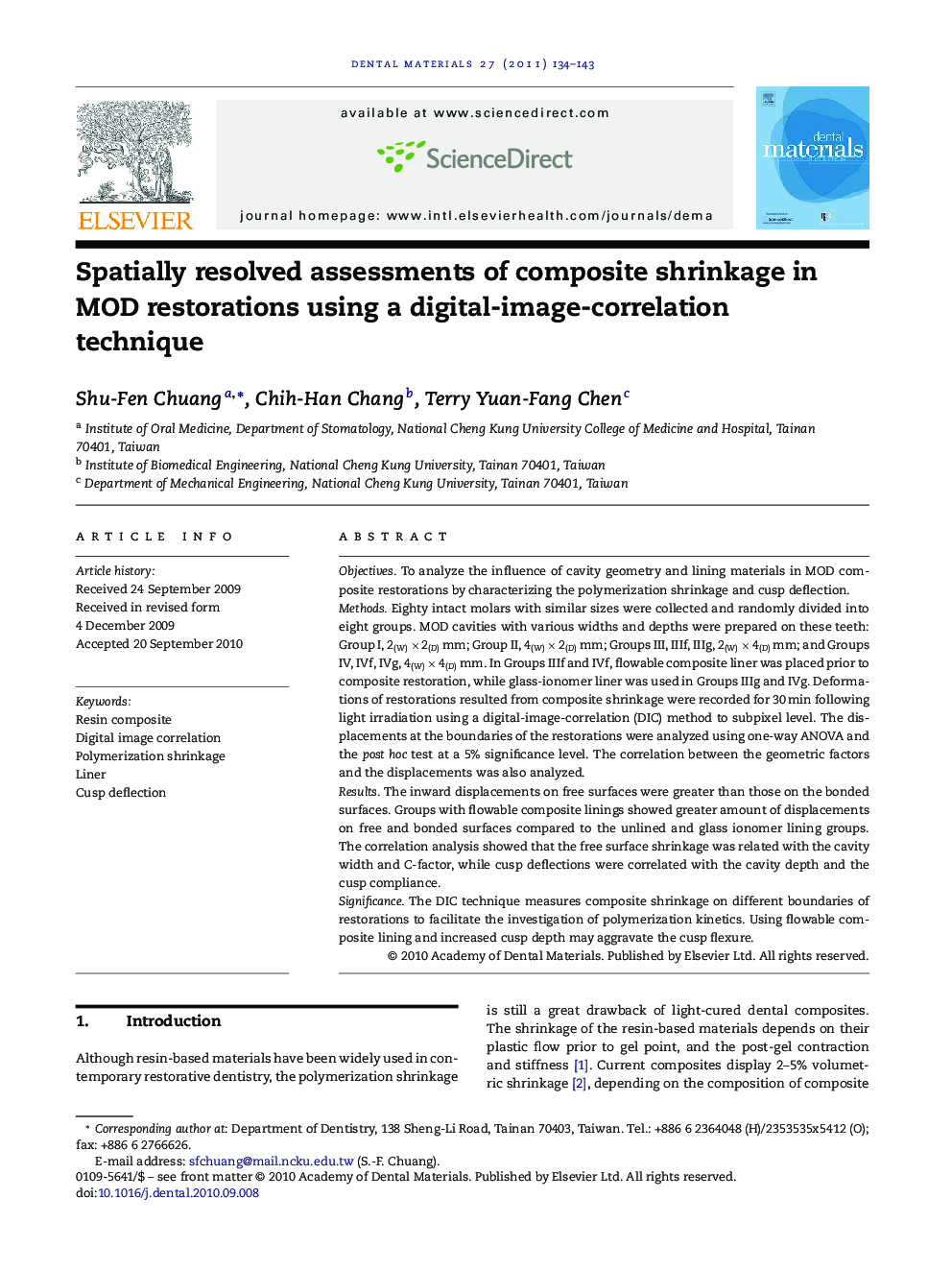| Article ID | Journal | Published Year | Pages | File Type |
|---|---|---|---|---|
| 1421297 | Dental Materials | 2011 | 10 Pages |
ObjectivesTo analyze the influence of cavity geometry and lining materials in MOD composite restorations by characterizing the polymerization shrinkage and cusp deflection.MethodsEighty intact molars with similar sizes were collected and randomly divided into eight groups. MOD cavities with various widths and depths were prepared on these teeth: Group I, 2(W) × 2(D) mm; Group II, 4(W) × 2(D) mm; Groups III, IIIf, IIIg, 2(W) × 4(D) mm; and Groups IV, IVf, IVg, 4(W) × 4(D) mm. In Groups IIIf and IVf, flowable composite liner was placed prior to composite restoration, while glass-ionomer liner was used in Groups IIIg and IVg. Deformations of restorations resulted from composite shrinkage were recorded for 30 min following light irradiation using a digital-image-correlation (DIC) method to subpixel level. The displacements at the boundaries of the restorations were analyzed using one-way ANOVA and the post hoc test at a 5% significance level. The correlation between the geometric factors and the displacements was also analyzed.ResultsThe inward displacements on free surfaces were greater than those on the bonded surfaces. Groups with flowable composite linings showed greater amount of displacements on free and bonded surfaces compared to the unlined and glass ionomer lining groups. The correlation analysis showed that the free surface shrinkage was related with the cavity width and C-factor, while cusp deflections were correlated with the cavity depth and the cusp compliance.SignificanceThe DIC technique measures composite shrinkage on different boundaries of restorations to facilitate the investigation of polymerization kinetics. Using flowable composite lining and increased cusp depth may aggravate the cusp flexure.
